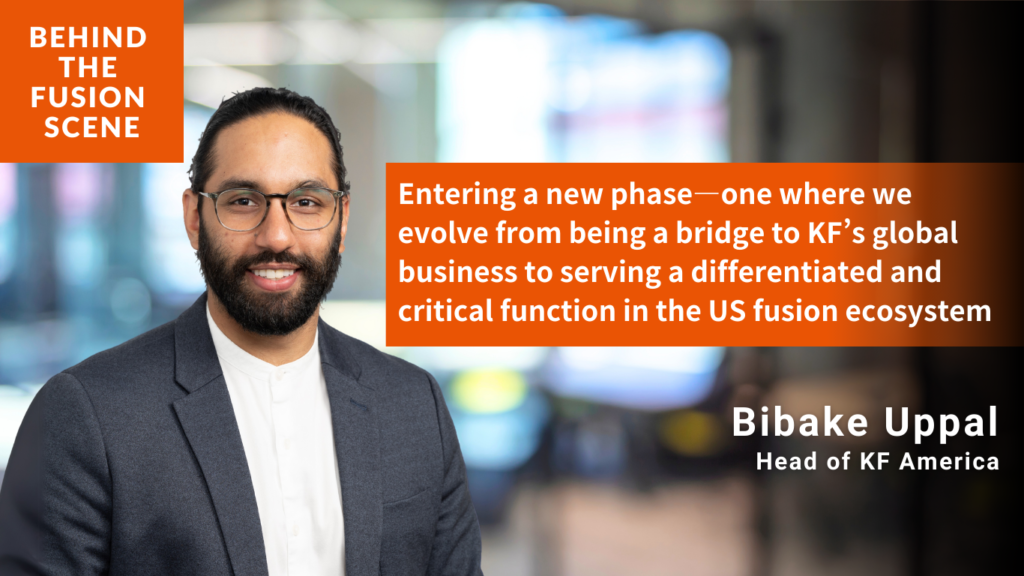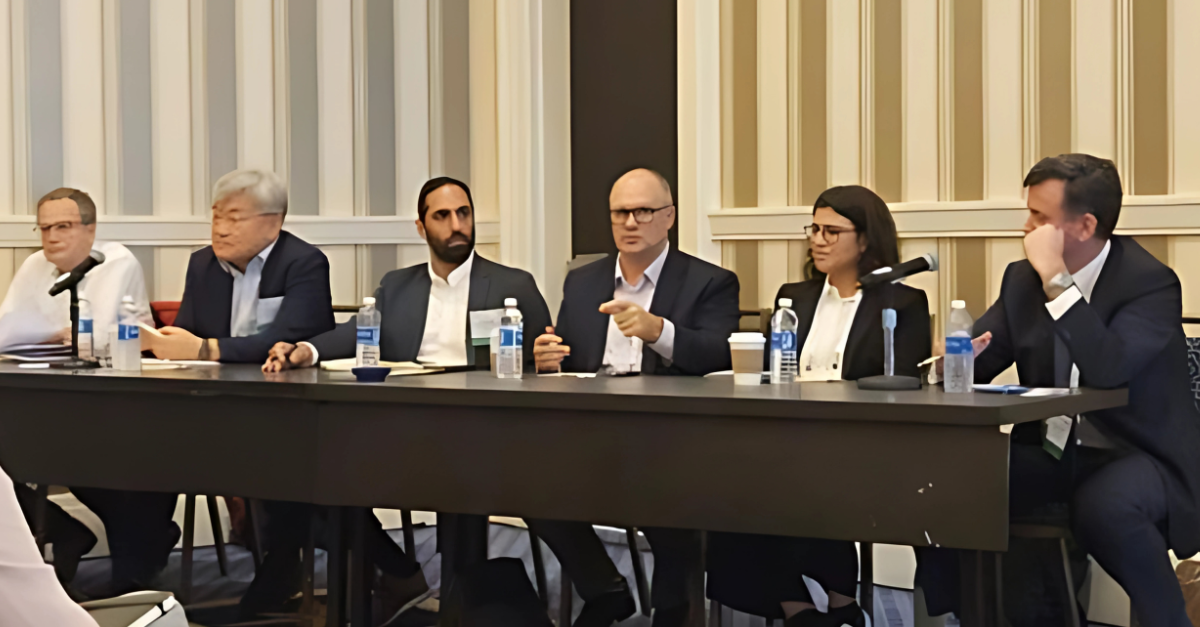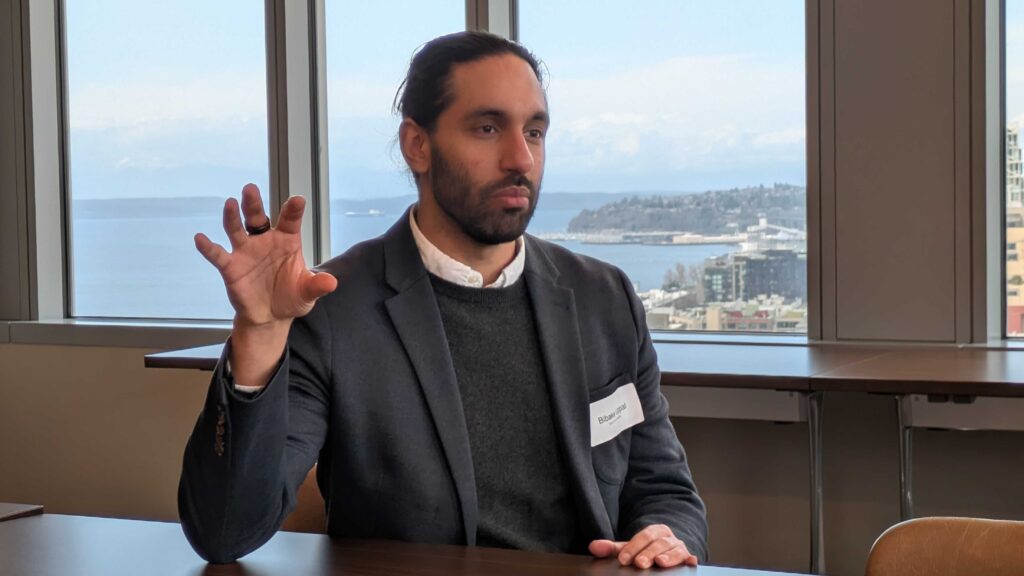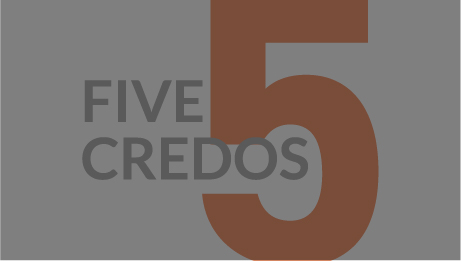
In a nutshell:
Since joining KF America—the US subsidiary of Kyoto Fusioneering—in January 2023, Bibake, Head of KF America, has driven operational growth and expanded the company’s impact within the North American fusion ecosystem. Leveraging his diverse background, he is dedicated to accelerating progress and continuing to build partnerships across both public and private sectors to advance US fusion goals and build a scalable business.
Now in its third year, how is KF America positioning itself in the evolving US fusion ecosystem?
Initially, KF America focused on establishing ties with the US fusion ecosystem through partnerships with national labs, universities, and private developers. Today, we’re evolving beyond a conduit for Kyoto Fusioneering (KF)’s global business into a dynamic, independent player driving US fusion innovation. We leverage KF’s world-leading fusion engineering expertise while building local partnerships and supply chains. We’re here to shape the fusion industry by actively contributing to US fusion projects and driving innovation on North American soil.

KF America has hit some notable early milestones, including facilitating US-based funding and establishing novel partnerships. What are the highlights and how do they influence the path forward?
I’m very proud of the momentum we’ve built as measured not only by the tangible achievements, but also by the connections we’ve made with the ecosystem, which are both broad and deep. They’ve opened many doors for us, some of which we have walked through and others which we will soon.
Our joint venture with Canadian Nuclear Laboratories to build UNITY-2, the world’s first fully integrated fusion fuel cycle, is foundational to our global expansion. Through the new company, Fusion Fuel Cycles, we are developing and demonstrating tritium handling and processing technologies, which directly impact fusion power plant development in the US and around the world on a decadal timeframe.
On the funding side, the US-based, In-Q-Tel, became a shareholder in KF’s most recent round. This adds another key dimension to our connection to the US ecosystem. We’re using these funds now to grow our team and capabilities in the US.
Your path into fusion is quite unique. How have your experiences prepared you to lead KF America and drive its mission?
I’ve had the pleasure of wearing many hats throughout my life, which has prepared me well for the current era of fusion. Though the lack of “PhD” after my name is atypical for fusion, the breadth of my experience has been a strength. Having studied and/or worked in communications, data science, and strategy consulting in both public and private sectors, I am fortunate to have a broad problem-solving toolkit at my disposal. I enjoy learning about and translating between different worlds – for example, between the high-tech engineering side and the business or policy side of a project. It’s helped me build relationships with a wide range of people, from scientists and engineers to investors and entrepreneurs, and everyone in between.
What has been an important motivator in your life? How has that helped you overcome challenges?
I’ve been driven by different things at different points in life but if I reflect on what has been the common thread, I have always sought to imagine an optimistic and exciting outcome over which I have influence and pursue it with a mix of discipline and pragmatism.
When I was seven, I imagined being a professional athlete and even made a bet with my sister about it, presumably both wagering our parents’ money. As a Canadian, my specific ambition naturally started with hockey. Then it was basketball. Then Tae-Kwon-Do. Until, ultimately, football. From age 12, I pursued this with discipline and pragmatism, which led me to play in the NCAA (National Collegiate Athletic Association) and, eventually, get signed as a professional to the hometown BC Lions of the Canadian Football League.
After an injury put an early end to my sports career, I sought to imagine a different optimistic outcome informed by everything I had learned and become. I didn’t realize it right away, but my sports career allowed me to develop many traits that translated into other domains. As I had done with sports, I tried many things, including corporate communications, strategy consulting, and, even, forest firefighting – taking the learnings from each on to the next.
Ultimately, I have decided on my optimistic outcome: see the world powered by fusion.
What sparked your interest in fusion?
While I was enjoying working on very interesting and hard problems for large enterprises as a consultant, I knew I ultimately wanted to build something truly transformative.
Then, a conversation with Kiyo (Kiyoshi Seko, COO at KF), a friend from my MBA at IE Business School in Madrid, changed everything. He passed the fusion bug onto me. As I learned more, it became clear that I needed to dedicate myself to fusion. It helped that it wasn’t a line of work that had a high injury rate.
When KF sought to establish a North American presence, I initially assumed the lack of “PhD” after my name would be a disqualifying factor but soon realized that it wasn’t more physicists that were needed but people from outside fusion who could support the scientists and engineers in turning fusion from research to commercial power.
So, I made my case, and the rest was history.

Looking ahead, what is the outlook for KF America? How do you see it expanding and influencing US fusion development in the coming years?
The outlook is incredibly exciting. The US is investing in fusion commercialization like never before – the federal government has set out some ambitious targets, and billions of dollars of private investment is pouring into the sector. In this environment, KF America plans to expand on multiple levels.
First, we’re growing our physical presence in the US so that we can support more initiatives simultaneously and have a broader reach. From our Seattle base, we will expand and deepen our ties across the country.
Second, as fusion projects move from experimental to demonstration and pilot phases, KF America aims to be the go-to provider of the critical subsystems and engineering know-how needed to build fusion plants. We want to see our technology in the first fusion power plants on US soil, effectively making us an indispensable part of those success stories.
We’re also actively involved in shaping industry standards and policy through groups like the Fusion Industry Association and other entities with strong regional ties. Building a fusion industry requires such coordinated effort. This also involves building bridges internationally where appropriate through our sibling entities.
Could you share your goals, both personally and as the Head of KF America?
My personal goals and KF’s mission are deeply intertwined. The US plays a central role in the present and future of fusion, and KF America serves as a crucial bridge between KF and the North American market. But we are now entering a new phase—one where we evolve from being a bridge to KF’s global business to serving a differentiated and critical function in the US fusion ecosystem. I’m excited for this new era.




